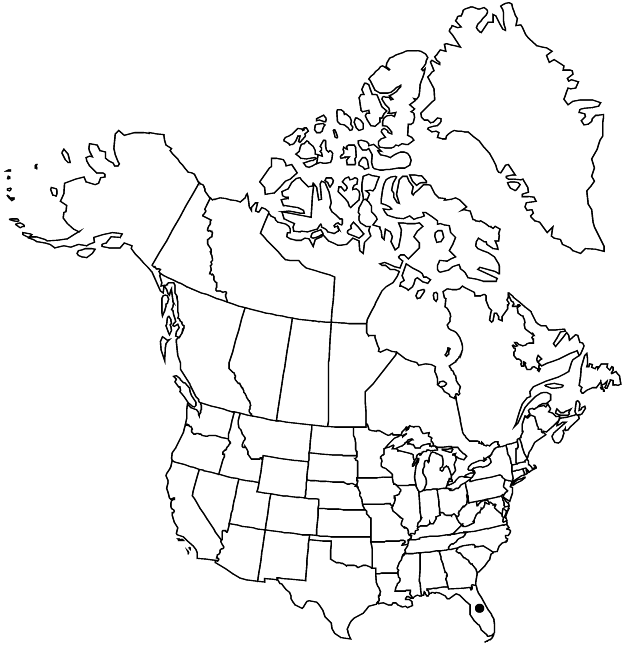Difference between revisions of "Sideroxylon rufohirtum"
Castanea 60: 358. 1996 ,.
FNA>Volume Importer |
FNA>Volume Importer |
(No difference)
| |
Revision as of 23:02, 16 December 2019
Shrubs, to 1 m. Stems armed, villous. Leaves deciduous; petiole 2–5 mm, villous (hairs reddish brown to brown); blade (dull to lustrous adaxially), elliptic to obovate, 14–33 × 7–20 mm, base cuneate to attenuate, margins plane, apex rounded to obtuse, sometimes retuse, abaxial surface villous (hairs reddish brown to brown), venation visible, adaxial surface glabrous, midrib flat, marginal vein absent. Inflorescences 4–24-flowered. Pedicels 2–5.5 mm, villous (hairs reddish brown to brown). Flowers: calyx 1.4–2.1 mm diam.; sepals 5, 1.4–2.1 × 1.2–1.8 mm, villous; petals 5, white, median segment broadly ovate, 1.6–1.8 mm, lateral segments lanceolate, 1.6–1.8 mm; stamens 5, 2–2.3 mm; staminodes lanceolate, 1.5–1.8 mm, erose; anthers sagittate-lanceolate, 7–8 mm; pistil 5-carpellate; ovary 5-locular, 1–1.2 mm, glabrate to hairy; style 1–1.2 mm. Berries purplish black, ellipsoid to subglobose, 8.5–13 mm, glabrous or glabrate. Seeds 8–11 mm.
Phenology: Flowering May–Jun.
Habitat: Pine-oak forests, hammocks, disturbed sites
Elevation: 50-100 m
Discussion
T. D. Pennington (1990) neither discussed nor listed Sideroxylon rufohirtum. In A. Cronquist’s (1945c) revision of Bumelia and in some floristic treatments (e.g., R. W. Long and O. Lakela 1971; R. P. Wunderlin 1998), S. rufohirtum (as S. rufotomentosa) was included within B. reticulata as a subspecies or variety.
We recognize Sideroxylon rufohirtum as a species, following recent treatments by R. K. Godfrey (1988) and B. J. Herring and W. S. Judd (1995), who differentiated it from S. reclinatum based on consistent differences in indument, habit, and habitat. It is characterized by its habit as a low shrub, reddish brown to brown indument, and comparatively short pedicels.
Selected References
None.
